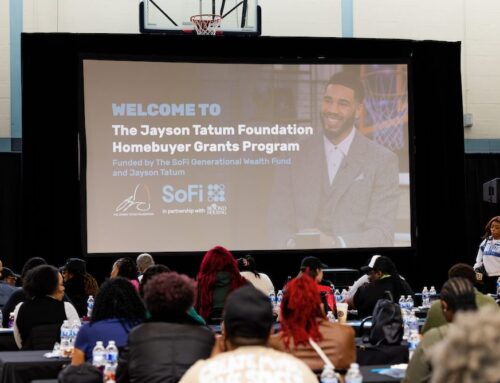President Biden recently signed into law the Secure 2.0 Act as part of the Fiscal Year 2023 Omnibus Appropriations Bill. This piece of legislation builds on the Setting Every Community Up for Retirement Enhancement (SECURE) Act, passed in 2019. Simply put, the SECURE Act and Secure 2.0 aim to help a wide range of Americans achieve retirement security and financial well-being.
One of the more groundbreaking elements of Secure 2.0 is its provision for employees saddled with student debt. Starting in 2024, the Act allows companies to match contributions to retirement accounts of employees who don’t actually make 401(k) contributions themselves, but instead make qualifying student loan payments.
The act puts into law a practice Abbott Laboratories has already successfully implemented with IRS approval. Under Secure 2.0, companies following the “Abbott Model” will no longer have to seek permission from the IRS to receive the advantages for this benefit.
In addition, Secure 2.0 will also extend earlier provisions and add new ones that will help older workers, retirees, military spouses, small business owners, and their employees save more for retirement.
The House of Representatives passed a version of Secure 2.0, called the Securing a Strong Retirement Act of 2022, on a 414-5 bipartisan basis in March 2022. A similar piece of legislation, the Retirement Security and Savings Act, was introduced in the Senate, but never made it out of the Senate Finance Committee despite bipartisan support.
Nonetheless, compromised Secure 2.0 legislation was included in the Fiscal Year 2023 Omnibus Appropriations Bill. In a statement, Senate Finance Committee Chair Ron Wyden, D-Ore., said, “Americans deserve dignified retirements after decades of hard work, and [the Secure 2.0 Act] is an important step forward. We are making significant progress for millions of low- and middle-income workers, who are far less likely to have retirement savings. These workers often have demanding, physical jobs, and depend solely on their Social Security income. For the first time, millions more workers would access resources for retirement and see federal retirement contributions year after year, even if they have no tax liability. These are reforms that will make a meaningful difference for workers who have struggled to save.”
For employers, the Secure 2.0 Act means that HR and benefits professionals, already knee-deep in implementing and assessing changes from the first SECURE Act, must also prepare for this next phase. Here are some steps that may help.
Step One: Understand SECURE and Secure 2.0
The SECURE Act, which was signed into law in December 2019, impacts nearly every employers’ retirement plan by expanding plan coverage, encouraging savings, and decreasing plan costs. Small businesses, for instance, were offered tax incentives to expand retirement plans and allowed to join together with other companies to offer retirement savings accounts.
Most of the provisions that were in the first Act are still part of the latest version. They include expanding automatic enrollment in 401(k) plans when a new plan is created, establishing Multiple Employer Plans for nonprofits and small businesses, allowing higher catch-up limits, increasing the age for required minimum distributions, reducing the excise tax on certain accumulations in qualified plans, and more.
Secure 2.0 takes those concepts further and adds a bit more to the mix. Auto-enrollment would now be mandatory for new plan participants. Catch-up contributions will be expanded even further and the age for required minimum distributions will be even higher. Read on for more on these changes. (And you can also read the full text of the law under Division T–Secure 2.0 Act of 2022.)
Step Two: Retool Your Auto-Enrollment
Auto-enrollment into 401(k) and other employer-sponsored retirement accounts have been growing in popularity in recent years, but it has never been mandatory. Employers have been able to choose whether or not to implement this feature. Under Secure 2.0, however, employers who introduce new retirement plans must auto-enroll employees beginning in 2025. That’s a big change.
Employees would be able to opt-out of the plans if they want, although that’s not the goal. And data from Vanguard Research published in February 2021 suggest that most employees will probably stay put. With automatic enrollment, participation rates among 813,918 new hires tripled to 91%, compared to 28% under voluntary enrollment, according to the research. Auto-enrolled participants were also likely to put more money into the plans over time, either automatically or voluntarily.
If you’re an employer implementing a new retirement plan and you haven’t already, you’ll probably want to build in an auto-enroll feature in anticipation of the new mandate in 2025. You may also want to begin drafting employee education materials explaining how auto-enrollment and opting out work.
However, the mandate for auto-enrollment won’t impact existing employer-sponsored retirement plans. Moreover, small businesses with 10 or fewer employees, new businesses operating for less than three years, and church and governmental plans will also be exempt.
Step Three: Evaluate Your Student Debt Benefits
Although the IRS opened the door to employers offering matching 401(k) funds to employees who pay down qualified student debt, many HR professionals have been wary of implementing the benefit with no authorizing legislation.
By authorizing these matches, Secure 2.0 eliminates that concern, leaving managers free to introduce this important aid for employees burdened by student debt. What’s more, a match tied to student-loan payments could help employers expand their plan participants well beyond highly compensated employees, potentially helping them pass the annual 401(k) plan anti-discrimination test.
Because the match contributions are going to retirement savings rather than paying down student loan debt, this benefit doesn’t replace other student loan repayment programs that your company offers or may be considering offering. Now may be a good time to look at your company’s overall strategy for helping employees pay off student debt to see where the 401(k) student loan match benefit might best fit. This benefit may be a way to help employees balance short-term and long-term financial wellness goals.
Step Four: Help Address Older Workers’ Concerns
Secure 2.0 offers a framework to provide more retirement saving strategies for your older workers, too. Catch-up contributions for employees age 50 are currently $7,500 for 2023. The new legislation increases annual catch-up contributions to a max of $10,000, or 50% more than the regular catch-up amount, for participants aged 62, 63, and 64 starting in 2025.
Employers will need to adjust their plan structures to accommodate the higher contribution limits, but they may also want to conduct an all-out information effort to make sure older workers understand that they have a new chance to catch up on retirement savings.
Employers may also want to help older workers understand and strategize the new minimum distribution age requirements. In order to allow people to save longer for retirement, the SECURE Act increased the age for required minimum distributions (RMDs) from 70½ to 72. Secure 2.0 increases that age to 73 in 2023 and 75 in 2033.
Workers who are close to retirement and may be trying to figure out their withdrawal and RMD strategies will need to be aware of the new rules, should they become law. They may need even more financial planning advice on this topic.
The Takeaway
Above are just a few of the many changes to retirement benefits in Secure 2.0. Lawmakers hope Secure 2.0 will augment and strengthen many of the features of the SECURE Act. Ideally, it can help HR professionals make more and more flexible options available to their employees of all ages who want to be able to save for retirement as well as reach other important financial goals in their lives. By being aware of the potential changes and preparing for them, employers may be able to roll out new programs smoothly and keep employees informed about their new options.
The field of benefits is constantly evolving. SoFi at Work can help you plan for the next generation of financial well-being benefits. With SoFi at Work, you have access to platforms and information that will help build the benefits you need to create a successful and loyal workforce.
Photo credit: iStock/NoSystem images
SoFi loans are originated by SoFi Bank, N.A., NMLS #696891 (Member FDIC). For information on licenses, see NMLS Consumer Access (www.nmlsconsumeraccess.org ). The Student Debt Navigator Tool and 529 Savings and Selection Tool are provided by SoFi Wealth LLC, an SEC-registered investment adviser. For additional product-specific legal and licensing information, see SoFi.com/legal. Equal housing lender.
Tax Information: This article provides general background information only and is not intended to serve as legal or tax advice or as a substitute for legal counsel. You should consult your own attorney and/or tax advisor if you have a question requiring legal or tax advice.
SoFi Student Loan Refinance
If you are looking to refinance federal student loans, please be aware that the White House has announced up to $20,000 of student loan forgiveness for Pell Grant recipients and $10,000 for qualifying borrowers whose student loans are federally held. Additionally, the federal student loan payment pause and interest holiday has been extended beyond December 31, 2022. Please carefully consider these changes before refinancing federally held loans with SoFi, since the amount or portion of your federal student debt that you refinance will no longer qualify for the federal loan payment suspension, interest waiver, or any other current or future benefits applicable to federal loans. If you qualify for federal student loan forgiveness and still wish to refinance, leave unrefinanced the amount you expect to be forgiven to receive your federal benefit.
CLICK HERE for more information.
Notice: SoFi refinance loans are private loans and do not have the same repayment options that the federal loan program offers such as Income-Driven Repayment plans, including Income-Contingent Repayment or PAYE. SoFi always recommends that you consult a qualified financial advisor to discuss what is best for your unique situation.
Financial Tips & Strategies: The tips provided on this website are of a general nature and do not take into account your specific objectives, financial situation, and needs. You should always consider their appropriateness given your own circumstances.
External Websites: The information and analysis provided through hyperlinks to third-party websites, while believed to be accurate, cannot be guaranteed by SoFi. Links are provided for informational purposes and should not be viewed as an endorsement.
SOBD052110
The post What the Secure 2.0 Act Means for Employers appeared first on SoFi.





Leave A Comment